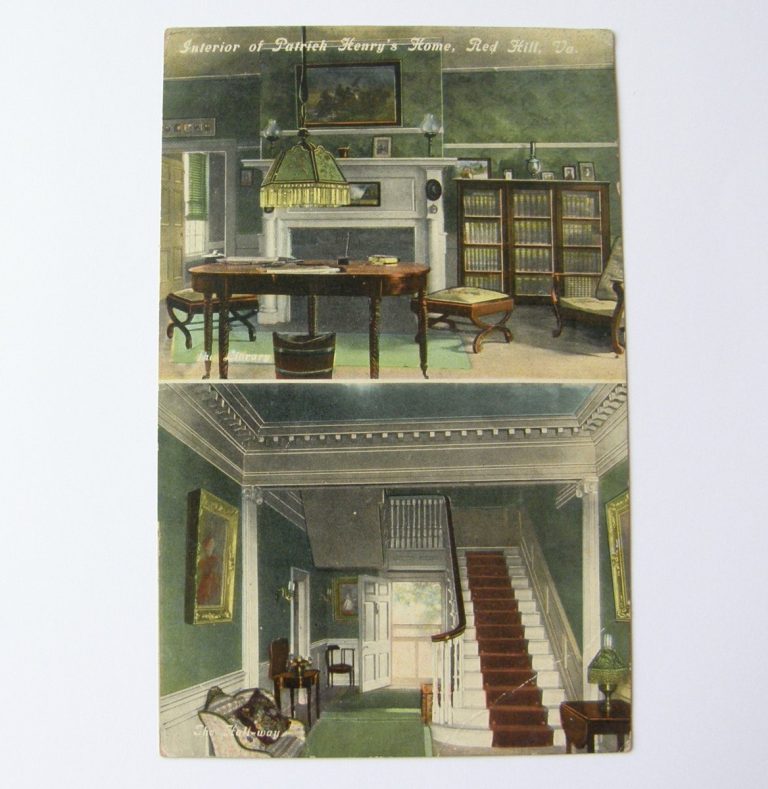V829:: Used but unposted ca.1908, Virginia Architecture, Interior Views, Patrick Henry’s Red Hill Estate, Brookneal Virginia, Charlotte County, Published by J.P. Bell Co (Lynchburg Virginia), Series Number 1017

SKU-V829::
Used but unposted ca.1908, Virginia Architecture, Interior Views, Patrick Henry’s Red Hill Estate, Brookneal Virginia, Charlotte County,
Published by J.P. Bell Co (Lynchburg Virginia),
Series Number 1017,
FYI: “Red Hill Patrick Henry National Memorial, also known as Patrick Henry’s Red Hill, in Charlotte County, Virginia, near the Town of Brookneal, is the final home and burial place of Founding Father Patrick Henry, the fiery legislator and orator of the American Revolution. Henry bought Red Hill Plantation at his retirement in 1794 and occupied it with his wife, Dorothea, and their children until 1799, the year of his death. In addition to the main house, Henry used another building as his law office. There were also dependencies and slave quarters on the working 2,930-acre tobacco plantation. The plantation was located on the Staunton River for transportation. Congress authorized the establishment of a Patrick Henry National Monument on August 15, 1935, pending the acquisition of the property by the Secretary of the Interior. The purchase never occurred, and the enabling legislation was repealed on December 21, 1944. The site was taken over by the Patrick Henry Memorial Foundation, established in 1944, which in the 1950s and 1960s restored Henry’s law office and preserved his grave onsite. It also reconstructed his last home and several dependencies. A new museum was built to provide for interpretation of his life and place in 1976. Red Hill Plantation was listed on the National Register of Historic Places on February 14, 1978. The national memorial was authorized by the United States Congress on May 13, 1986. Owned by the Patrick Henry Memorial Foundation, Red Hill is operated as a house museum and is an affiliated area of the National Park Service, meaning that the Foundation can request certain assistance from the NPS in preserving and interpreting the site. Planning in the 2000s for the site included a master plan to guide improvements. The first project, supported by 2006 grant money, made improvements and additions of walking trails to help visitors understand transportation and plantation agriculture. It related the site to 18th century bateaux trade and transportation along the river, its ferry site, and the later addition of a 19th-century “railroad flag stop. In 2018, the Foundation acquired a stretch of land known as the “Quarter Place” which housed the enslaved and later free Black populations at Red Hill. The Quarter Place is home to one of the largest intact cemeteries for the enslaved in Virginia, holding the remains of 147 persons. Currently, the Patrick Henry Memorial Foundation cares for about 1,000 acres of Henry’s original land.” (Wikipedia)
USA 1908 c.Reference number: 2024.V829
Click here to print.
go back
